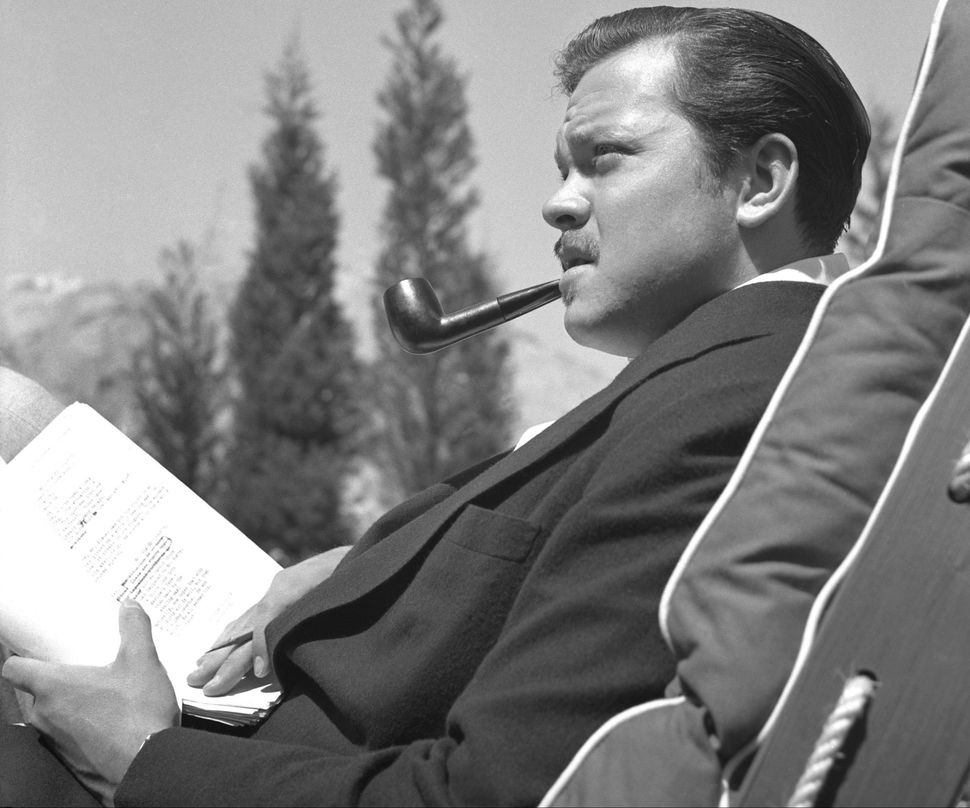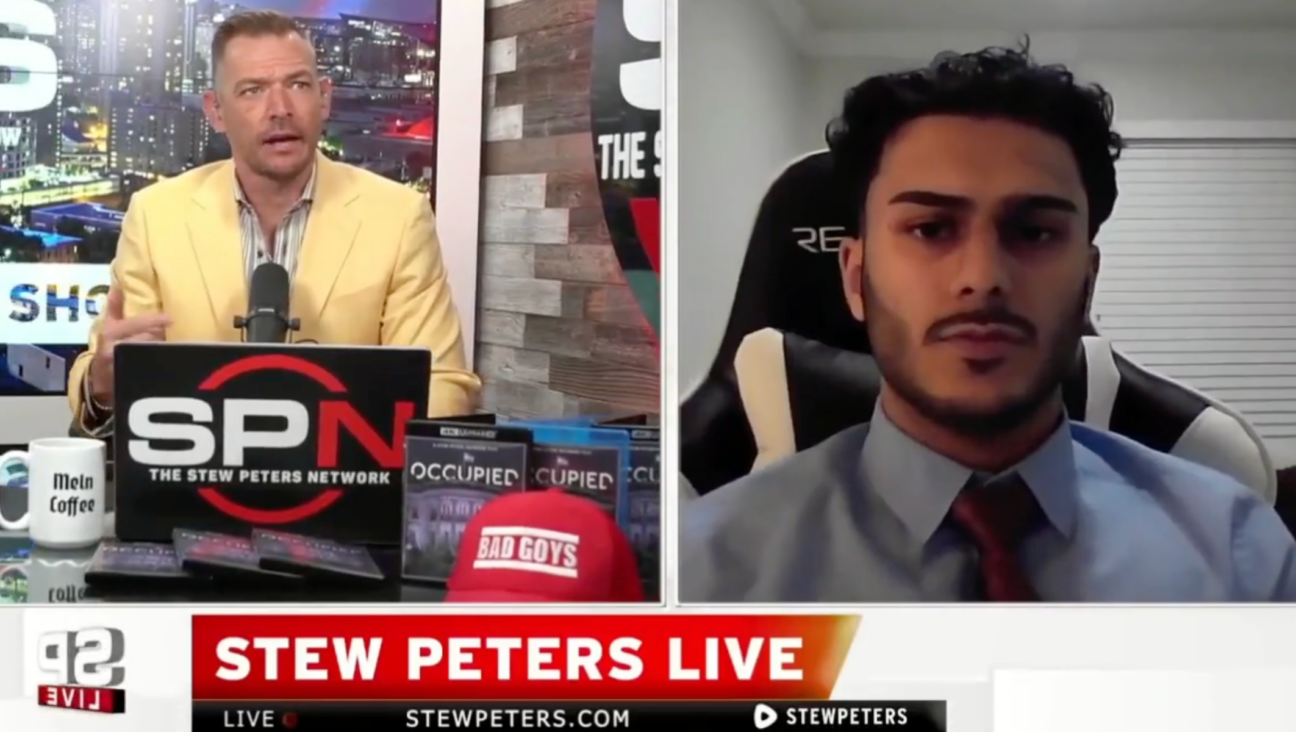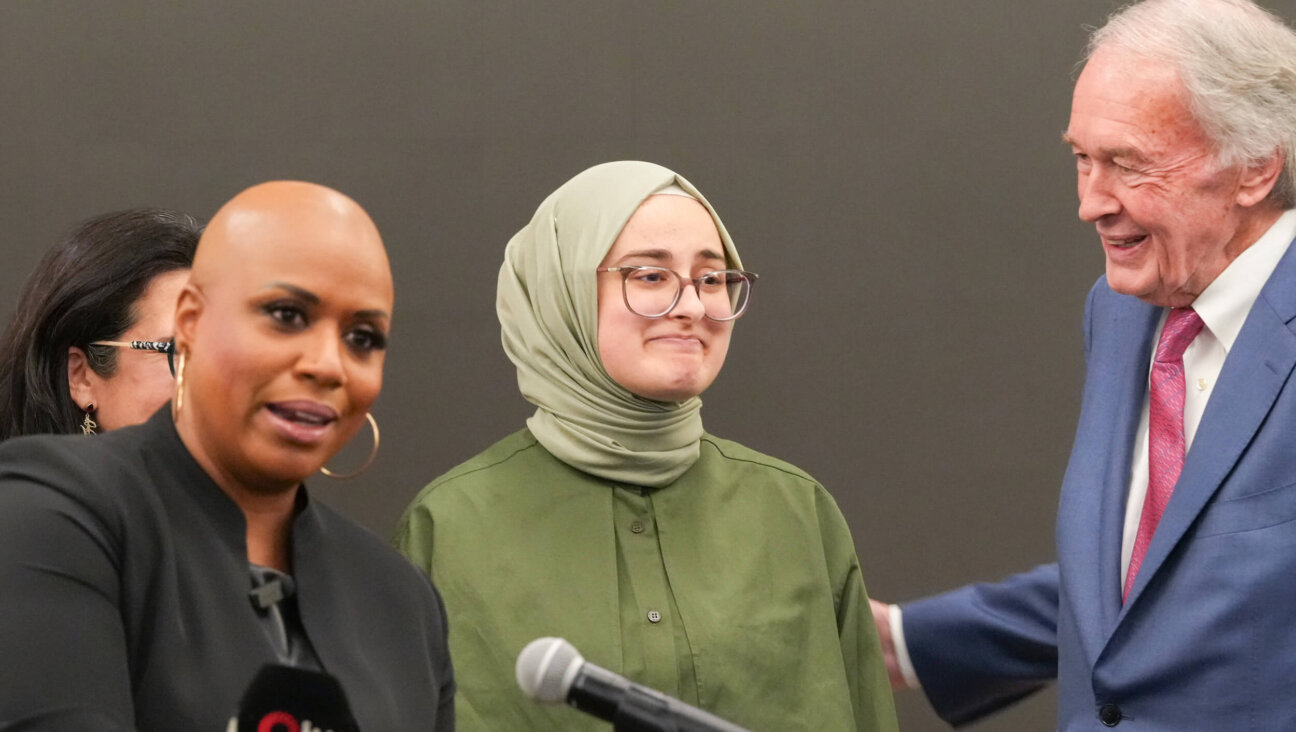Orson Welles’s Last Movie Will Finally Debut, Decades After His Death — And Here’s The Trailer

Orson Welles in 1940. Image by Earl Theisen Collection/Getty Images
The cinematic powers that be have blessed us: Behold the first trailer for a new Orson Welles film.
You read that right. Though the auteur behind “Citizen Kane” has been dead for over three decades, a troupe of strivers, among them the film’s co-star Peter Bogdanovich — himself a celebrated director — have managed to cobble together a final cut of the movie he shot between 1970 and 1977. Titled “The Other Side of the Wind,” the picture is set to premier at Venice in the coming days and will debut on Netflix on November 2.
Judging by the trailer, the film looks a lot like a meta-meditation on, well, film. “Is that what this movie’s about?” one actor, cloaked in shadow wonders. Another replies: “Well, we don’t actually know.”
We do know John Huston stars as self-destructive director Jake Hannaford, trying to mount a comeback with a film titled — you guessed it! — “The Other Side of the Wind.” Where the film inside-the-film starts and the world outside ends can’t be determined from the minute-and-a half-long trailer, but we can already tell that the movie has style to spare. Close-ups of disembodied mouths and eyes, falling bridges, swiveling gas masks and reckless behavior like drunk driving and rifle-shooting come at the viewer at a whiplash tempo in both color and black and white. Of course, there are plenty of glamorous shots of Welles’ co-writer and then-lover Oja Kodar, too.
If the trailer’s any indication, things won’t end well for our hero, who appears to be as mercurial an artistic force as Welles himself. As Susan Strasberg’s character observes: “What he creates he has to wreck, it’s a compulsion.”
Whatever the film’s outcome, the trailer ends with a knowing wink, as a character plops film canisters down on a counter, saying: “Well, here it is if anyone wants to see it.”
Netflix: Of course we do.
PJ Grisar is the Forward’s culture intern. He can be reached at [email protected]
The Forward is free to read, but it isn’t free to produce

I hope you appreciated this article. Before you go, I’d like to ask you to please support the Forward.
Now more than ever, American Jews need independent news they can trust, with reporting driven by truth, not ideology. We serve you, not any ideological agenda.
At a time when other newsrooms are closing or cutting back, the Forward has removed its paywall and invested additional resources to report on the ground from Israel and around the U.S. on the impact of the war, rising antisemitism and polarized discourse.
This is a great time to support independent Jewish journalism you rely on. Make a gift today!
— Rachel Fishman Feddersen, Publisher and CEO
Support our mission to tell the Jewish story fully and fairly.
Most Popular
- 1

Fast Forward Ye debuts ‘Heil Hitler’ music video that includes a sample of a Hitler speech
- 2

Opinion It looks like Israel totally underestimated Trump
- 3

Culture Is Pope Leo Jewish? Ask his distant cousins — like me
- 4

Fast Forward Student suspended for ‘F— the Jews’ video defends himself on antisemitic podcast
In Case You Missed It
-

News In Edan Alexander’s hometown in New Jersey, months of fear and anguish give way to joy and relief
-

Fast Forward What’s next for suspended student who posted ‘F— the Jews’ video? An alt-right media tour
-

Opinion Despite Netanyahu, Edan Alexander is finally free
-

Opinion A judge just released another pro-Palestinian activist. Here’s why that’s good for the Jews
-
Shop the Forward Store
100% of profits support our journalism
Republish This Story
Please read before republishing
We’re happy to make this story available to republish for free, unless it originated with JTA, Haaretz or another publication (as indicated on the article) and as long as you follow our guidelines.
You must comply with the following:
- Credit the Forward
- Retain our pixel
- Preserve our canonical link in Google search
- Add a noindex tag in Google search
See our full guidelines for more information, and this guide for detail about canonical URLs.
To republish, copy the HTML by clicking on the yellow button to the right; it includes our tracking pixel, all paragraph styles and hyperlinks, the author byline and credit to the Forward. It does not include images; to avoid copyright violations, you must add them manually, following our guidelines. Please email us at [email protected], subject line “republish,” with any questions or to let us know what stories you’re picking up.















